Demonstrator Projects
Details on what was achieved in the project for these research themes can be found on the 'Outcomes' page.
Demonstrator 1: Integrated Non-Rare-Earth High Performance Drive
Led by Prof Patrick Luk (Cranfield University). CoIs: Prof Volker Pickert (Newcastle University) and Prof Keith Pullen (City University).
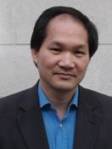

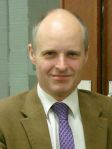
Aims of project:
1. Cost reduction and power density improvement of the EV drive train
- Mitigation/even elimination of expensive materials such as rare earth permanent magnetics (PM)
- New and novel cooling method for both electric machine and power electronics
- Integrated system level design
- High speed electric drive with high efficiency gearbox
- Integrated Non-Rare-Earth High Performance Drive
2. Interior ferrite PM motor harnessing both PM and reluctance torque
- High power density power converter with Smart cooling technique
- Integration of electromagnetic and mechanical design
- Mechanical and thermal integration of motor and power converter
- Functional integration between the machine and controller
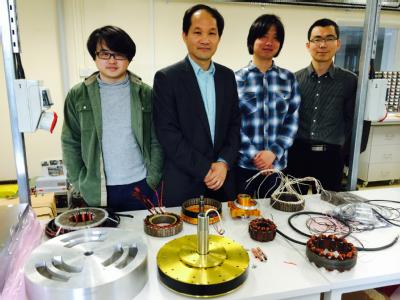 |
The group at Cranfield constructing the rotor and stator for Demonstrator 1 and the Motors Theme. Picture shows (from left to right) Dr Weizhong Fei, Prof. Patrick Luk, and PhD students, Bing Xia, and Demin Wu. |
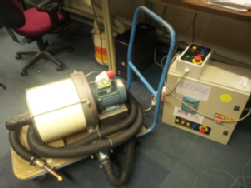
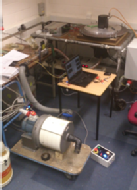 A blower and inverter for supplying coolant; fan, mass flowmeter, and 'buffer vessel'.
A blower and inverter for supplying coolant; fan, mass flowmeter, and 'buffer vessel'.
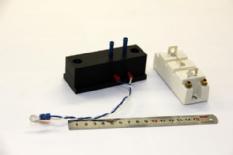 |
Breathing Heatsink: Traditionally heatsinks are passive components. The picture shows a “Breathing Heatsink” (black device) developed at Newcastle University. The Breathing Heatsink will be connected to a power module (white device). Its internal structure allows the heatsink to change the thermal impedance actively so the amount of heat taken by the Breathing Heatsink varies in a controlled manner. This allows control of the power device chip temperature which is not possible with today’s heatsinks. Control of the device temperature will increase the lifetime of power modules dramatically. The project aims to increase the lifetime by a factor of 2. |
Demonstrator 2: Integrated Power Conversion for Reduced EMI
Led by Prof Phil Mellor (University of Bristol). CoIs: Prof Andrew Forsyth (University of Manchester) and Prof Mark Johnson (University of Nottingham).


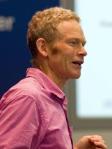
Technical challenge:
- This demonstrator will address the challenge of providing an integrated, optimised, controllable converter interface for at least three elements within the on-board electrical system, each element having dissimilar and variable voltages.
Aim of project:
- The aim is to integrate multiple functional elements: a propulsion converter, a high power bi-directional DC to DC converter, high voltage distribution and EMI filters, within a single enclosure sharing a common cooling circuit.
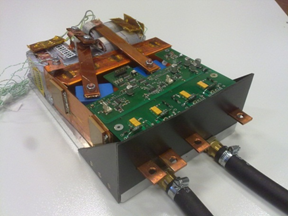 DC DC converter
DC DC converter 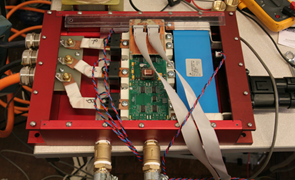 Power module for control
Power module for control
The objectives are to demonstrate:
- Improved electromagnetic compatibility between the units
- Significantly reduced electromagnetic emissions compared to the individual elements
- Volume and weight saving through a shared enclosure and cooling, and integrated inter-converter connections and filtering
- Appraise the system weight benefit of higher semiconductor switching speeds
Demonstrator 3: An Integrated On-board Battery Charger using a Highly Integrated Drive and a Nine-phase Machine, with V2G Capability
Led by Prof Emil Levi (Liverpool John Moores University). CoIs: Prof Andrew Cruden (Southampton University) and Prof Mark Johnson (University of Nottingham).
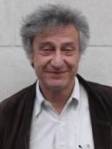


Objectives of project:
- To develop, design, manufacture and test a working prototype system that will enable bi-directional power flow and will utilise exactly the same hardware components in the three different operating modes, namely: propulsion, battery charging, and V2G operation.Timeframe: Proof of concept using a laboratory prototype (no dc-dc converter) completed by September 2014; and to have a full demonstrator assembly completed by September 2015.
- To develop a high power density modular power converter, based on wide band-gap devices, that will serve as the power interface between the dc source (battery) and the machine (in propulsion mode), i.e. grid (in charging and V2G modes). Timeframe: Two converters developed at Nottingham by September 2014, one of standard and the other of advanced design (including dc-dc converter).
- To design hardware and software for laptop/DSP communication in such a way as to enable automated demonstrator operation with rapid two-way data transfer and visual display in wired/wireless modes in order to maximise the dissemination opportunities. Timeframe: Completed by September 2014 at Southampton.
The demonstrator concept:
The power converter consists of: a nine-phase inverter – motor drive system and dc-dc boost converter. High current port for dc-dc battery connection.
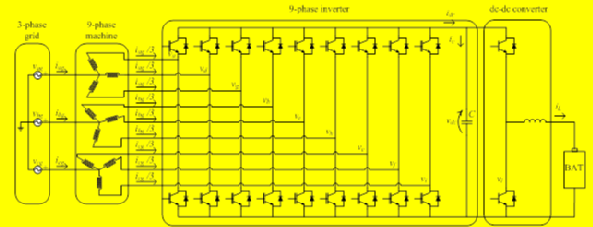
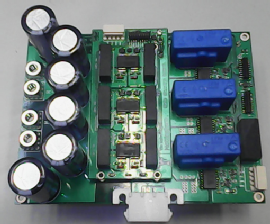
First image shows the demonstrator concept with nine-phase inverter. Second image is of a 3-phase power module.